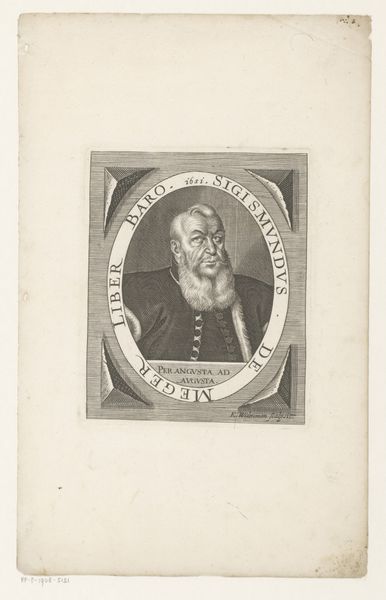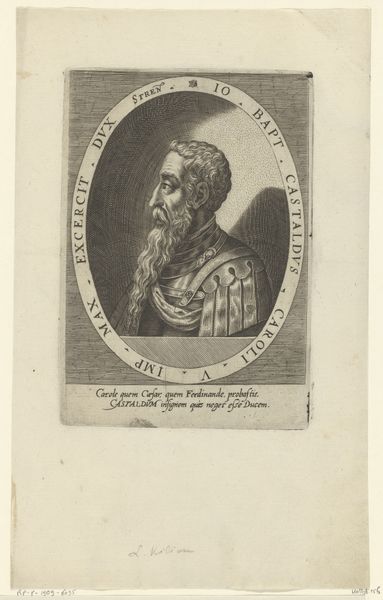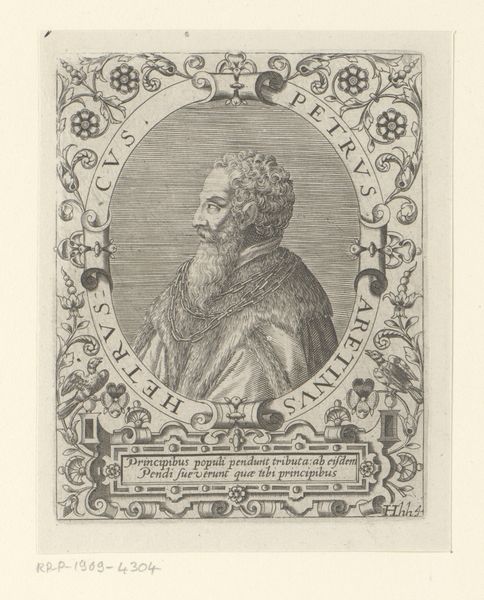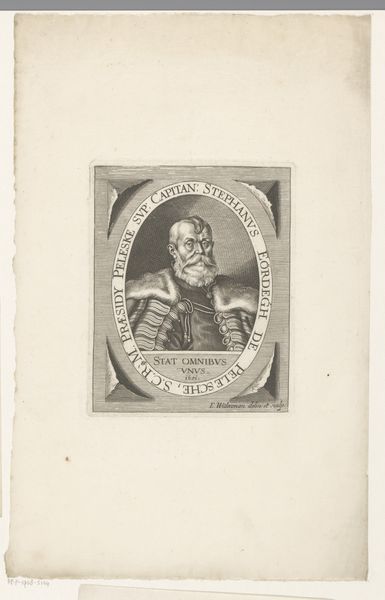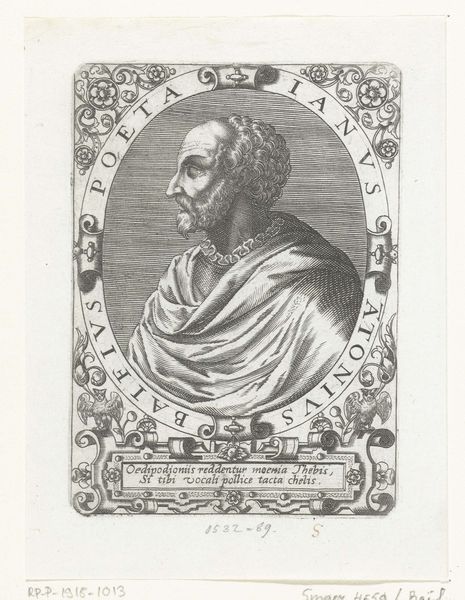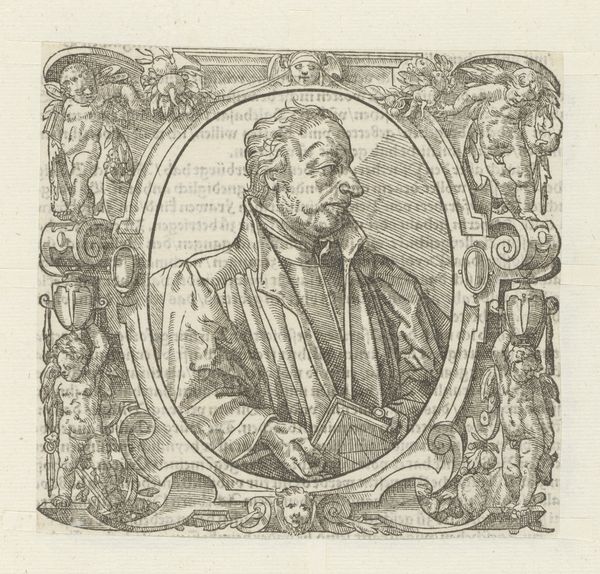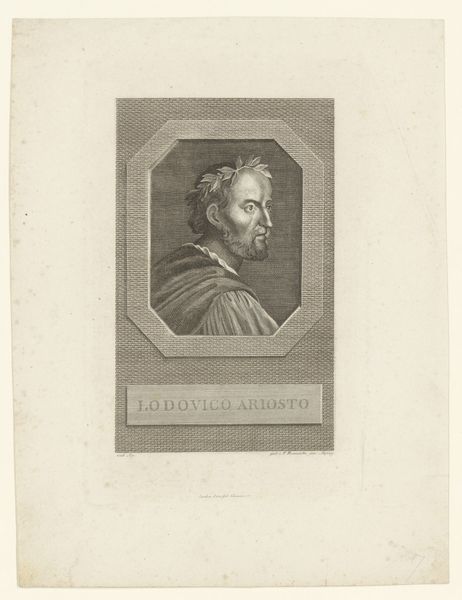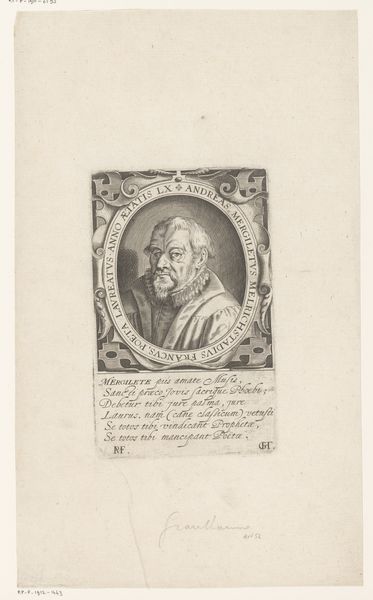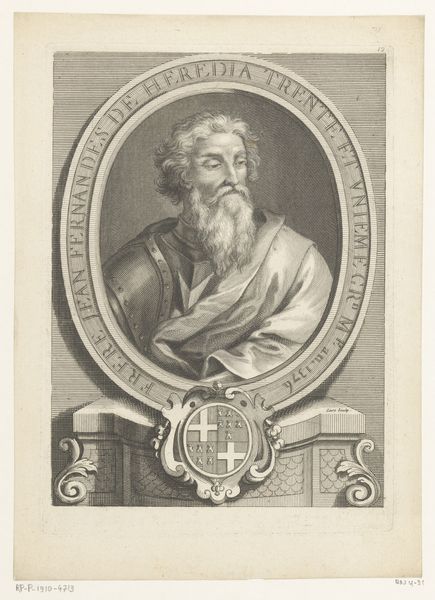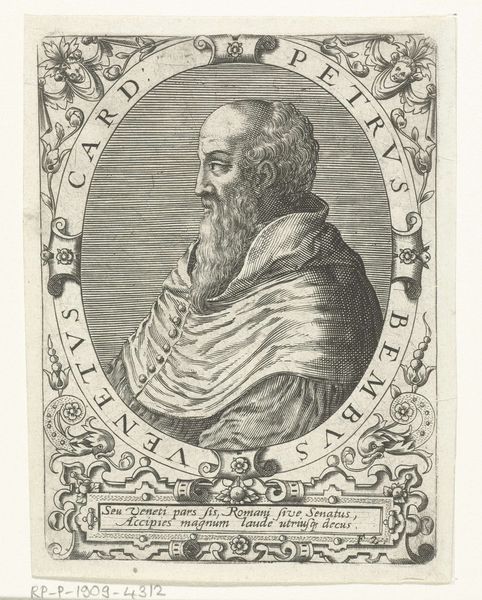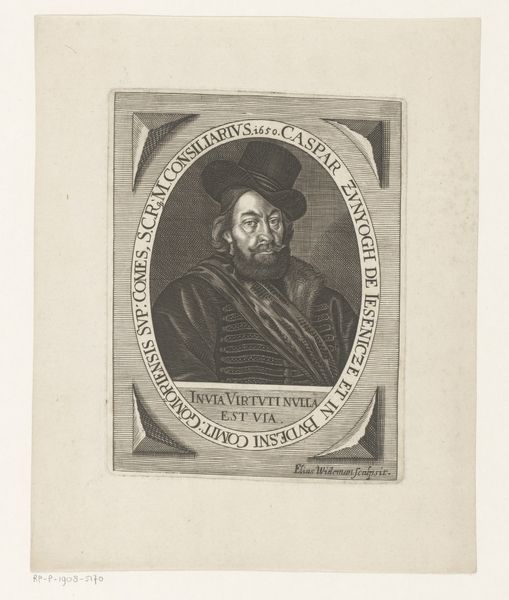
print, paper, engraving
#
portrait
#
baroque
# print
#
old engraving style
#
paper
#
history-painting
#
engraving
Dimensions: height 147 mm, width 117 mm
Copyright: Rijks Museum: Open Domain
Editor: This is Elias Widemann's 1651 engraving, "Portret van László Fekete," housed at the Rijksmuseum. It's a striking portrait; the detail is incredible for an engraving. I’m particularly interested in its framing, with those little cracked corners and Latin inscriptions. What historical insights can you glean from this work? Curator: This portrait presents an interesting glimpse into the world of 17th-century Central Europe and its complicated relationships with political power. It seems to be depicting László Fekete, and, crucially, his societal role, which is reinforced by the visual language around the image itself. How do you think the Latin inscriptions function in this context? Editor: I imagine the Latin inscriptions lent the image an air of prestige and sophistication, but also made it exclusive to certain groups. Curator: Precisely. In this period, portrait engravings like this were often commissioned to commemorate individuals and disseminate their image, especially within political or academic circles. Notice the phrases "VICE CAPITANEVS," referring to his position as Vice Captain and "S.C.R.M" implying nobility. This tells us about the subject’s social standing and how they wanted to be perceived. Editor: So the visual language helps to construct a specific image of power and authority. It also speaks to how portraits were functioning socially. Curator: Exactly. Also, note how printmaking technology enabled wider dissemination, it served as a tool for constructing and reinforcing social hierarchies. Considering the time period, do you have any immediate ideas as to *why* an image of someone with Fekete’s titles would need distributing? Editor: I suppose with Europe’s shifting geopolitical situation, this engraving could’ve helped project strength amid conflict. What do you take away from this artwork? Curator: Understanding the historical context illuminates the intentionality behind the creation and circulation. For me, it highlights the intersection of art, power, and social identity in the 17th century, revealing the careful construction of public image. Editor: This gives me a completely new way to think about portraits; I’ll never see them the same way.
Comments
No comments
Be the first to comment and join the conversation on the ultimate creative platform.
